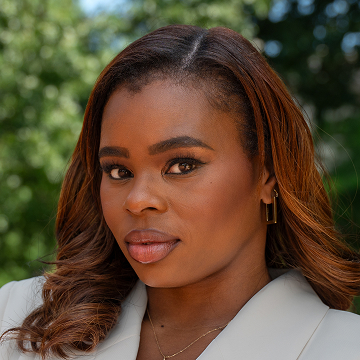Federal furloughs, layoffs and rising health care costs galvanized union members to vote and volunteer in numbers labor organizers say they haven’t seen in more than a decade.
“What I saw last week was Obama-era numbers,” Herb Smith, a political organizer for the American Federation of Government Employees, which represents the federal workforce, said. AFGE endorsed Spangberger in September.
Former Reps. Abigail Spanberger and Mikie Sherrill cruised to landslide victories in the governors’ races for Virginia and New Jersey, respectively. Spanberger’s turnout numbers were particularly pronounced in Northern Virginia, where many federal workers live.
“It was, ‘Hey, this is an emergency, this is all hands on deck. Hey, it may not affect you now but it’s definitely going to affect you later.’ And honestly, when we put it like that, it really wasn’t hard,” said Smith, whose organizing district includes Virginia.
Voter enthusiasm typically ramps up as Election Day nears, but this year’s calendar coincided with the increasingly dire fallout of the government shutdown: missed paychecks, reductions in force by President Trump’s Office of Management and Budget and uncertainty surrounding funding for the Supplemental Nutrition Assistance Program, which will provide reduced benefits for 42 million Americans.
That message appealed to affected workers across the political spectrum, resulting in hundreds of volunteers showing up to Northern Virginia campaign offices in the last week and a half before elections, Smith said. He compared that to just 30 to 40 AFGE volunteers during the last gubernatorial campaign in 2021.
“The role of the federal shutdown and the recent firings of federal workers by the Trump administration drove turnout in Virginia and was wind at the back of the unions that were involved in pulling out voters,” said Joseph McCartin, a professor and executive director of Georgetown University’s labor initiative.
Labor organizers said that some downstream effects of the shutdown — and the budget law Trump signed in July — went a long way to bring out volunteers in New Jersey, too.
Cristino Vilorio, the president of the New Jersey State Council for the International Association of Machinists and Aerospace Workers, which endorsed Sherrill, brought up health care cuts and SNAP as what proved most important to his union’s members.
“It is clear that the shutdown was affecting working people and continues to affect working people, so we used that to our advantage,” Vilorio said.
He estimated that there were 150 IAM volunteers each week in his region of Hudson County, at least a 50% jump from the last governor’s race in 2021, when Democratic Gov. Phil Murphy was seeking reelection.
The Service Employees International Union, which in April endorsed Spanberger, noted that DOGE cuts and furloughs were important to its work in Northern Virginia, but what resonated more widely with members — who include Veterans Affairs hospital employees — was the impact of cuts to Medicaid and the health care workforce, and rising Affordable Care Act premiums, per SEIU’s political director.
Those issues get to a bigger affordability problem that SEIU members are still concerned about after President Donald Trump won back the White House campaigning on the high cost of living, the director added. Union organizers also heard concerns from voters about the future of SNAP benefits.
Although SEIU saw typical turnout from its members in this year’s races, participation from other unions surpassed organizers’ expectations. Increased participation from union members in New Jersey followed Republican gains in the state last year. Although Kamala Harris won New Jersey, Trump narrowed the state’s partisan split by 10 percentage points from 2020 to 2024.
Vilorio thinks Sherrill’s win is a better tell of what’s to come.
“I still strongly believe that New Jersey, it is a blue state. What we saw in 2024 is not indicative of what New Jersey is as a whole,” he said.
This site is protected by reCAPTCHA, and the Google Privacy Policy and Terms of Service apply. By continuing on NOTUS, you agree to its Terms of Use and Privacy Policy.
Sign in
Log into your free account with your email. Don’t have one?
This site is protected by reCAPTCHA, and the Google Privacy Policy and Terms of Service apply. By continuing on NOTUS, you agree to its Terms of Use and Privacy Policy.
Check your email for a one-time code.
We sent a 4-digit code to . Enter the pin to confirm your account.
New code will be available in 1:00
Let’s try this again.
We encountered an error with the passcode sent to . Please reenter your email.
This site is protected by reCAPTCHA, and the Google Privacy Policy and Terms of Service apply. By continuing on NOTUS, you agree to its Terms of Use and Privacy Policy.


